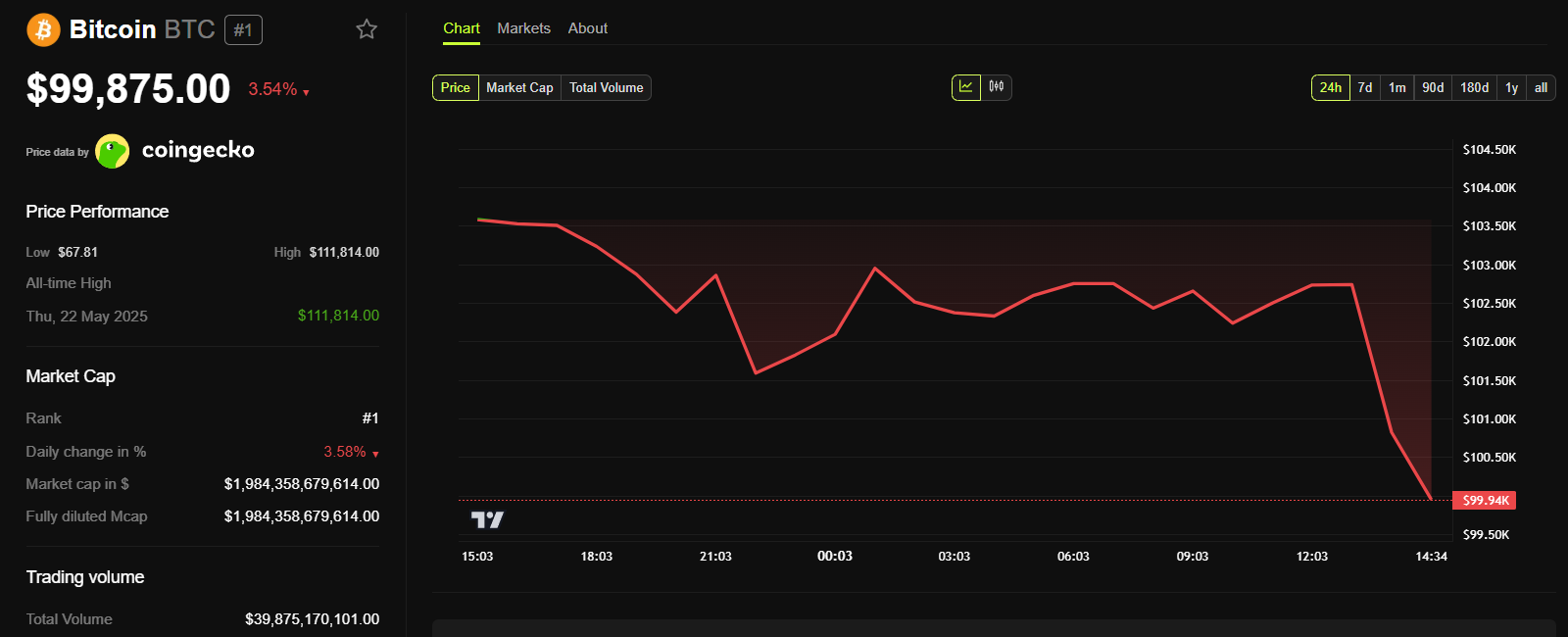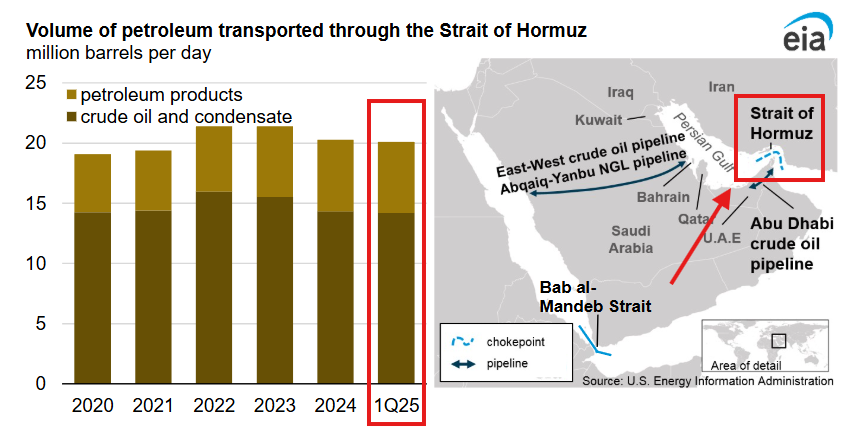-
Iran’s parliament has approved a proposal to close the Strait of Hormuz, a critical chokepoint for global oil supply, triggering significant market volatility and heightened energy risk.
-
Bitcoin fell below the $100,000 mark amid $948 million in crypto liquidations, reflecting growing investor caution and the potential for further downside pressure.
-
According to COINOTAG, “The intersection of geopolitical tensions and energy-driven inflation fears is creating a challenging environment for crypto assets, with safe-haven demand strengthening the US dollar and Treasury yields.”
Iran’s Strait of Hormuz closure proposal sparks crypto sell-off; Bitcoin dips below $100K amid energy inflation fears and Fed tightening risks.
Geopolitical Tensions and Their Immediate Impact on Crypto Markets
The recent parliamentary approval in Iran to potentially close the Strait of Hormuz has sent shockwaves through global financial markets, particularly impacting cryptocurrencies. This strategic waterway facilitates nearly 25% of the world’s oil shipments, making it a vital artery for energy supplies. The mere prospect of its closure has intensified fears of an energy supply crunch, which in turn has led to a sharp sell-off in risk assets, including Bitcoin and Ethereum.
Bitcoin’s price drop below $100,000, accompanied by nearly $950 million in liquidations, underscores the market’s sensitivity to geopolitical developments. Ethereum and XRP also experienced notable declines, with Ethereum falling below $2,200 and XRP dipping under $2 for the first time in months. These movements reflect a broader risk-off sentiment as investors seek to reduce exposure to volatile assets amid uncertainty.
Energy Inflation and Federal Reserve Policy: A Double-Edged Sword for Crypto
The potential closure of the Strait of Hormuz threatens to push oil prices higher, exacerbating inflationary pressures globally. Elevated energy costs typically ripple through economies, increasing transportation and production expenses, which can delay economic recovery and complicate monetary policy decisions. The Federal Reserve, which targets a 2% inflation rate, may respond with tighter monetary policy if inflation expectations rise, leading to higher real yields.
Higher real yields increase the opportunity cost of holding non-yielding assets like Bitcoin, often resulting in downward pressure on crypto prices. Historically, periods of rising Treasury yields have coincided with crypto market corrections, as investors reallocate capital towards safer, yield-bearing instruments. This dynamic is currently playing out as the dollar strengthens and Treasury yields rise, further pressuring digital assets.

Market Mechanics: Liquidations, Leverage, and Investor Behavior
The recent crypto sell-off has been amplified by the use of leverage among both retail and institutional traders. With many market participants holding long positions, sudden price declines triggered margin calls and forced liquidations, intensifying downward momentum. The total liquidations approaching $950 million within 24 hours highlight the scale of forced selling.
Volatility indices and Treasury yield spreads have widened, signaling increased market stress and reduced risk appetite. This environment favors capital preservation strategies, often at the expense of higher-risk assets like cryptocurrencies. The correlation between a strengthening US dollar and crypto weakness remains a key factor to monitor, as a sustained dollar rally could push Bitcoin prices further down, potentially testing support levels near $95,000.

Key Indicators to Monitor Amid Rising Macro Risks
Market participants should closely observe several critical developments that will shape the near-term trajectory of cryptocurrencies:
- Supreme National Security Council (SNSC) Decision: The final vote on the Strait of Hormuz closure will determine the actual risk level of energy supply disruption.
- Oil Price Movements: A sustained break above $100 per barrel could intensify inflationary pressures and influence central bank policies.
- Federal Reserve Communications: Any signals of tightening monetary policy in response to energy shocks will impact real yields and risk asset valuations.
These indicators will provide valuable insights into the evolving macroeconomic landscape and help investors adjust their crypto exposure accordingly.
Conclusion
The approval of Iran’s proposal to close the Strait of Hormuz marks a significant escalation in geopolitical risk with far-reaching implications for global energy markets and cryptocurrencies. Until there is greater clarity on the geopolitical front and energy supply stabilizes, expect continued volatility and downward pressure on Bitcoin and other digital assets. Investors should remain vigilant, leveraging key macroeconomic indicators to navigate this complex environment while considering the heightened risk profile of crypto markets during this period.
